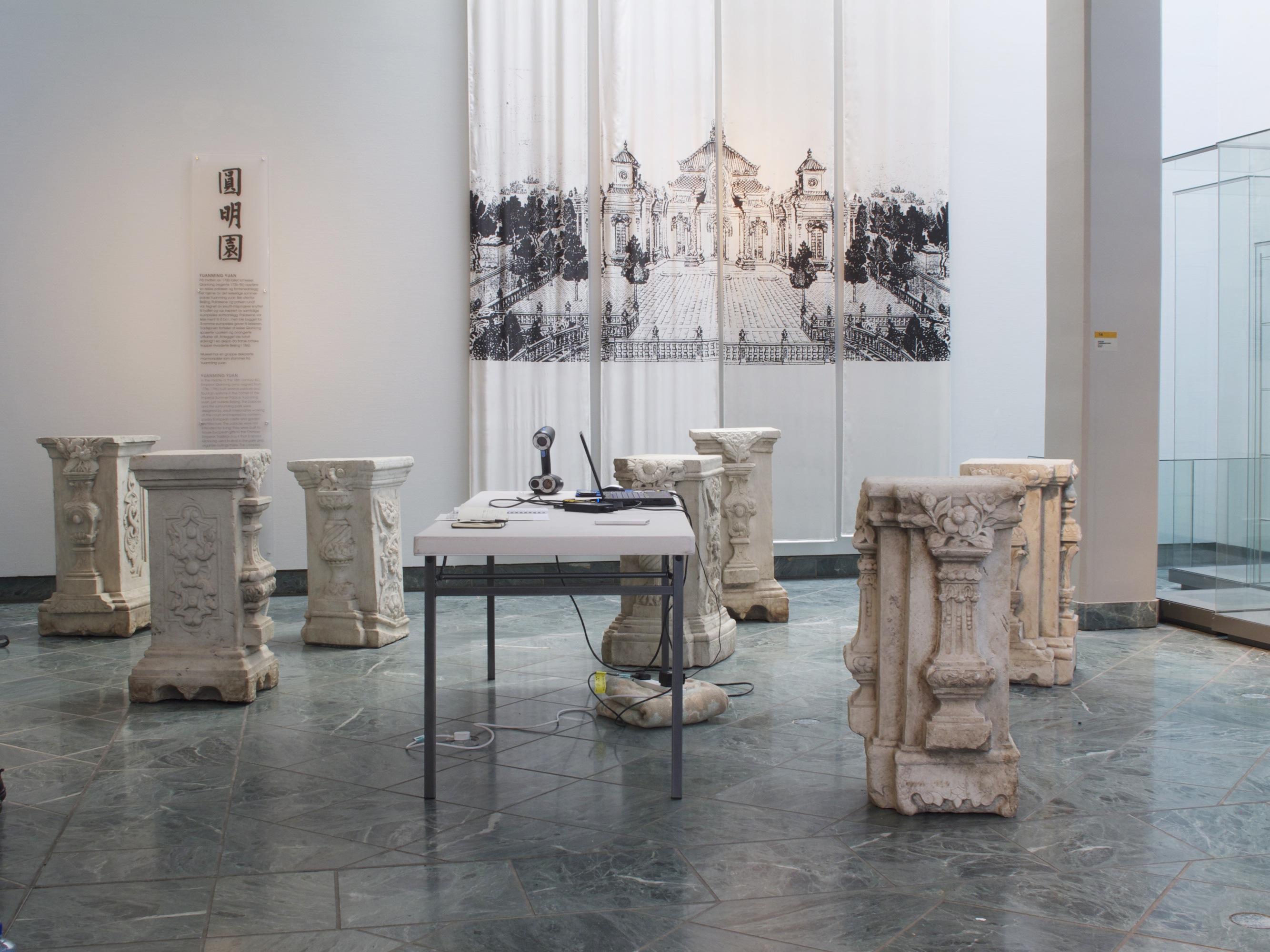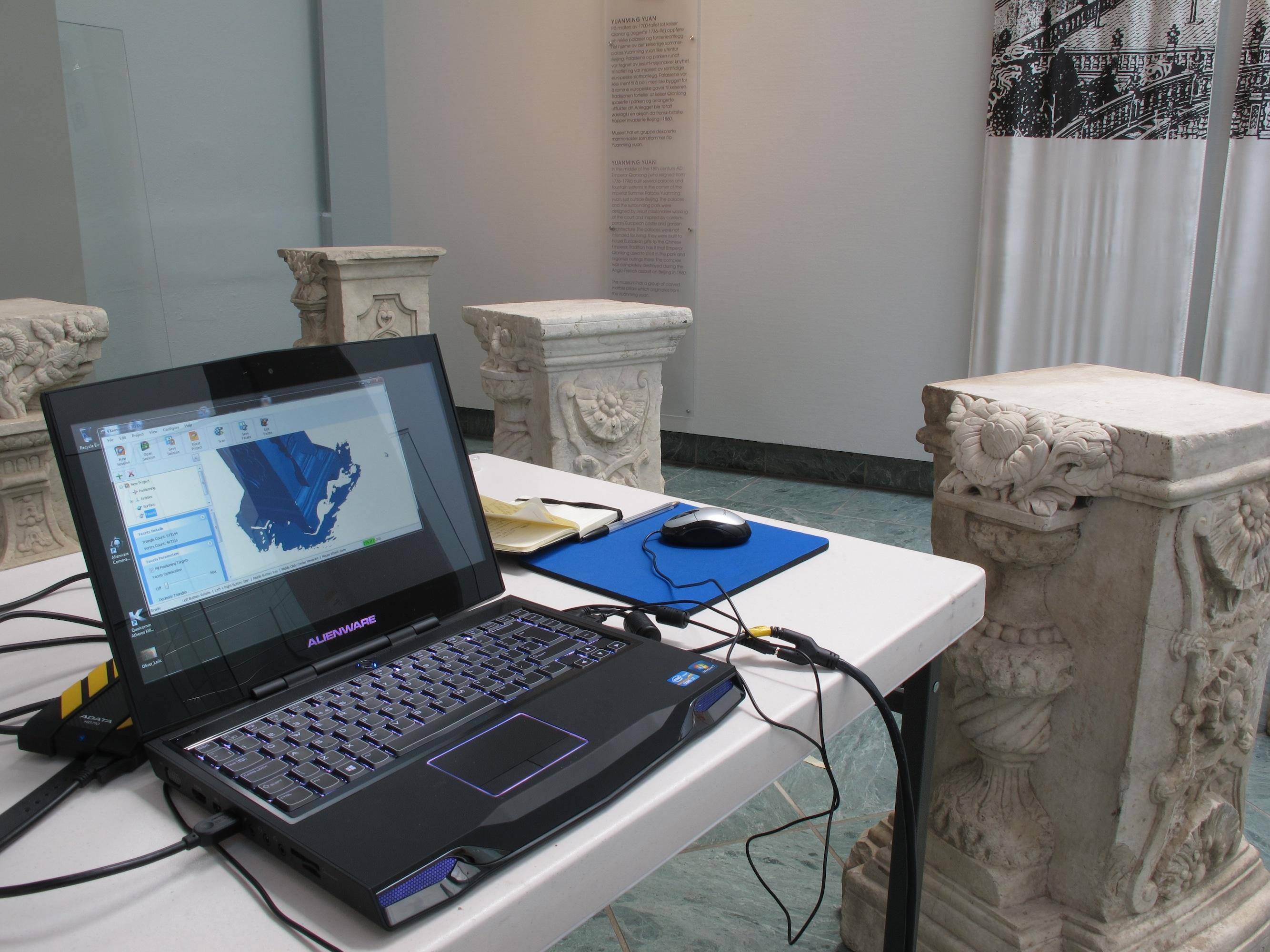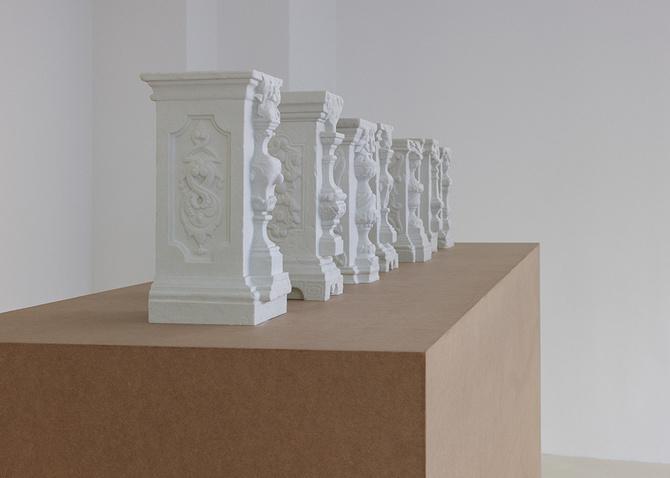Can something priceless have its value damaged by making copies? Artist Oliver Laric doesn’t think so, but his position has not found universal agreement. Laric, who has already made a name for himself through 3D scanned prints of numerous works of art, became fully enmeshed in this controversy when he created 3D scans of seven columns from the Old Summer Palace in Beijing. The plot thickens when you add in the fact that these scans were made in Norway, where the columns are currently housed, after having been removed from China in the 1860’s.
This story starts out as many museum acquisition controversies do: Western intervention in a society resulted in the removal of culturally valuable artifacts that then become part of a Western museum’s permanent collection. The question then becomes, whether or not there is an obligation (either ethical or legal) to return the artifacts to their place or people of origin. In this particular case, the decision has been made to return to the columns to China where they will reside in the collection of Peking University. However, this is not the end of the struggle to define their ownership.
Now that the columns are destined to be returned, the existence of scanned copies of them is seen by some as yet another attempt to steal them. For Laric though, the point isn’t that exact replicas exist to be appreciated in lieu of the originals, but rather that the very dialog of authenticity be expanded. This is especially necessary, given the advanced 3D scanning and printing technologies available and those yet to come. The very nature of the digital world is one in which copies are continuously produced and the line between piracy, flattery, and imitation is still being defined.
The copies that Laric created are on display at the KODE Art Museum of Bergen and he has elected to make the 3D scan files available as a free download from the web. This means that anyone with a computer and the correct software to open the stereolithography CAD files can create their own versions of the columns – or simply print out exact replicas. It is this accessibility and potential production and reproduction that has led to the concern over the impact on the cultural value of the original objects.
Surely there is some value to the original that cannot be sapped through reproduction, even if it were possibly on an industrial scale. After all, the Eiffel Tower appears to have remained unharmed despite the mind boggling number of 2D and 3D copies of it that have been made. In fact, those copies may serve to reinforce the value of the original. There is something about seeing the original that cannot be recreated in its doppelgänger. As Laric himself noted:
When I got to see them live the first time, it felt like what I would imagine a pilgrimage feels like…[a]s much as I love documentation, it was moving to touch them.
Part of what makes this issue so complex, is that the decision to copy them and the act of dissemination was not performed by the Chinese people, but rather by a Western artist in the very location where they were so long held as loot. It may seem an insult to return the originals while simultaneously taking their form and making it infinitely reproducible. Given the controversy over a number of objects, currently housed in the museums of the West, that were removed, at best, under questionable circumstances, their reproduction is a fascinating added dimension to consider in the philosophy of cultural stewardship and theories of 3D creation.
What people do with the files currently available remains to be seen. Only time will tell in what ways this type of copying does or does not become a regular part of the practices of cultural dissemination.
What do you think? Is this artist right or wrong? Discuss in the topic dedicated to this story at 3DPB.com
Subscribe to Our Email Newsletter
Stay up-to-date on all the latest news from the 3D printing industry and receive information and offers from third party vendors.
You May Also Like
3D Printing Unpeeled: New Arkema Material for HP, Saddle and Macro MEMS
A new Arkema material for MJF is said to reduce costs per part by up to 25% and have an 85% reusability ratio. HP 3D HR PA 12 S has been...
3D Printing News Briefs, January 20, 2024: FDM, LPBF, Underwater 3D Printer, Racing, & More
We’re starting off with a process certification in today’s 3D Printing News Briefs, and then moving on to research about solute trapping, laser powder bed fusion, and then moving on...
3D Printing Webinar and Event Roundup: December 3, 2023
We’ve got plenty of events and webinars coming up for you this week! Quickparts is having a Manufacturing Roadshow, America Makes is holding a Member Town Hall, Stratafest makes two...
Intuitive Machines Debuts $40M Hub for Lunar Ambitions and 3D Printing Tech
Best known for its pioneering work in lunar exploration and its development of the Nova-C lunar lander, Intuitive Machines (Nasdaq: LUNR) has marked yet another significant milestone. The leading space...




































